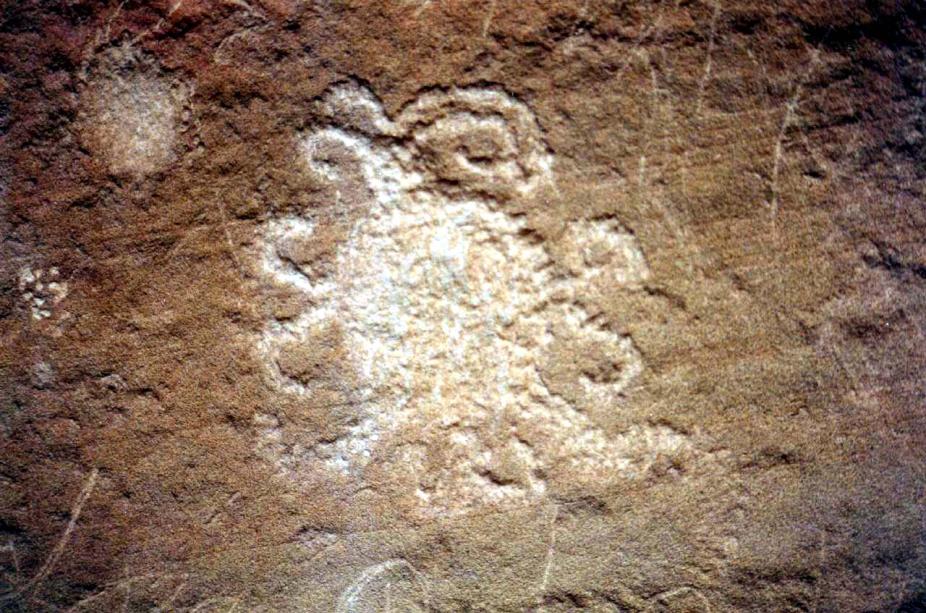Solar Eclipse Petroglyph

A petroglyph, suggestive of a solar eclipse, is found on the South side of a large boulder near the Una Vida ruin in Chaco Canyon.
The rock art interpretation problem can become acute when considering possible direct depictions of astronomical events. One can certainly argue that to a culture preoccupied with solar observations for crucial calendrical and ceremonial purposes, rare events such as solar eclipses must have been quite impressive, perhaps to the point of being worth recording in some form. There were actually four total solar eclipses visible from somewhere in the San Juan basin between A.D. 700 and 1300: 13 April 804, 11 July 1097, 13 June 1257, and 17 October 1259 (solar eclipses also occurred on 29 July 957 and 7 March 1076, but were only partial in most of the San Juan basin). This slide shows a suggestive petroglyph, which is found on the South side of a large boulder near the Una Vida ruin in Chaco Canyon. This boulder appears to have been an ancient solar observing station. Standing on the Northeast side of the boulder at a spot indicated by a spiral petroglyph, the NE horizon is characterized by a sharp pyramidal rock which can serve as an horizon marker allowing anticipation of the summer solstice.
The petroglyph can be interpreted as a schematic depiction of the solar corona at times of eclipse; the central, solid disc is the eclipsed Sun, which is surrounded by elongated features of a length comparable to the solar diameter, distributed all around the solar disc. This is a tolerable depiction of the solar corona at times close to the maximum in solar activity, when "helmet streamers" are found at all heliocentric latitudes (total eclipse image and Yohkoh X-ray images from The Sun: a Pictorial Introduction). If one accepts this interpretation, then the pecked solid dot to the upper left of the eclipse petroglyph can be interpreted as the planet Venus, whose daytime appearance near the eclipsed Sun is often a visually striking sight at time of total eclipse. Once again this represents a plausible conjecture, for which proper cultural context is yet to be established